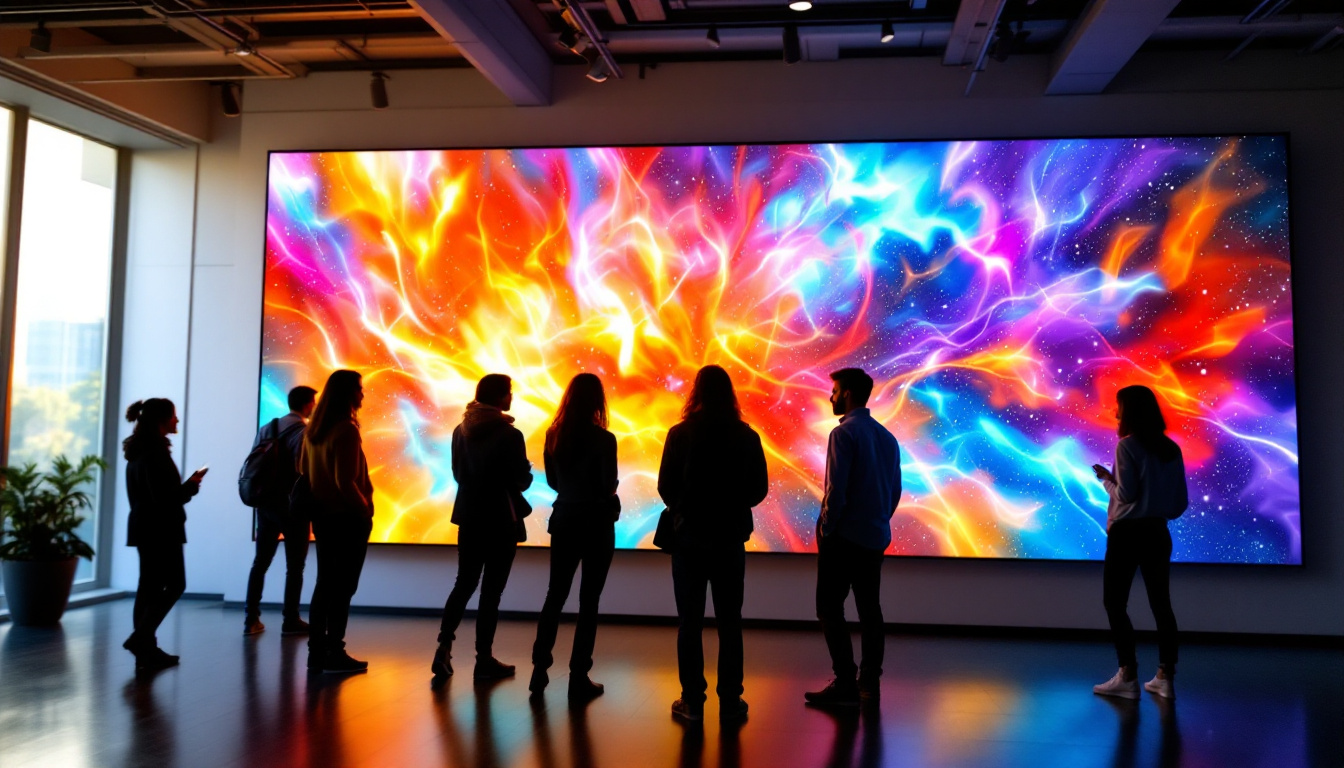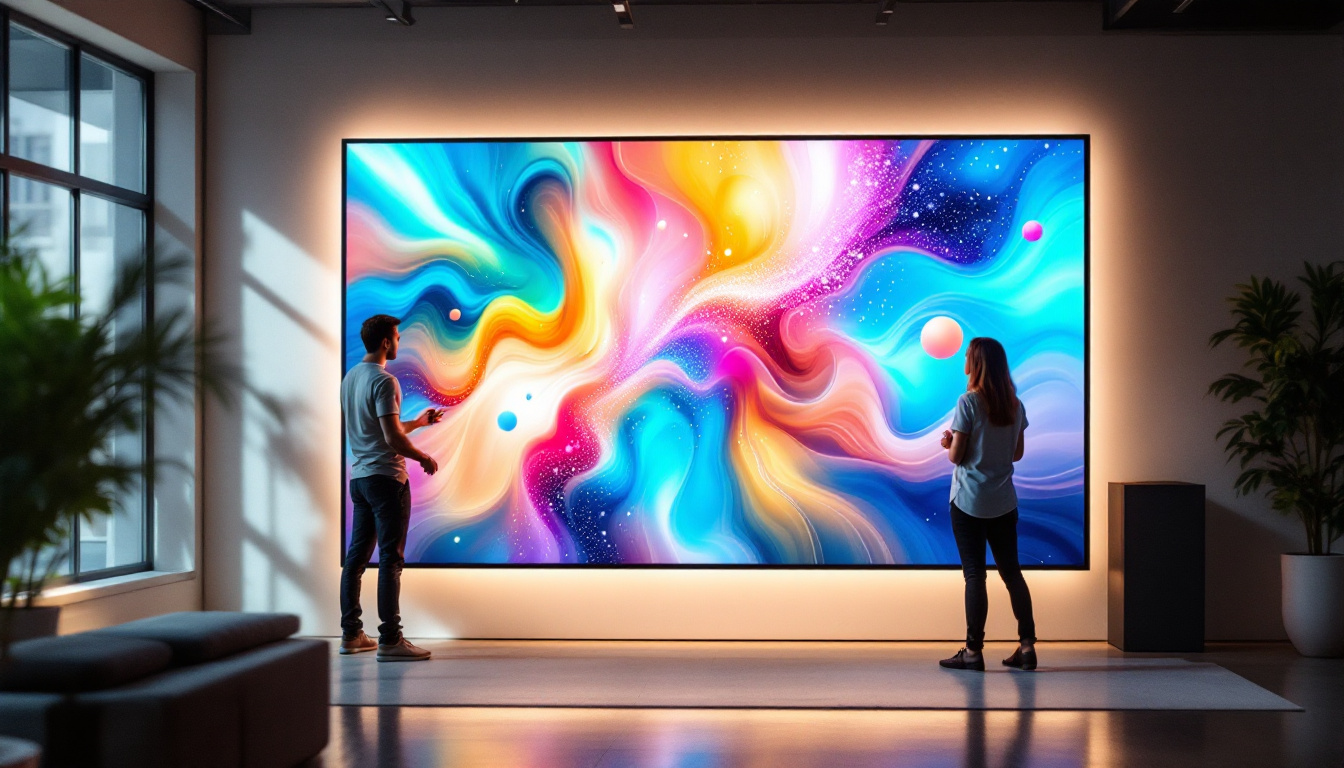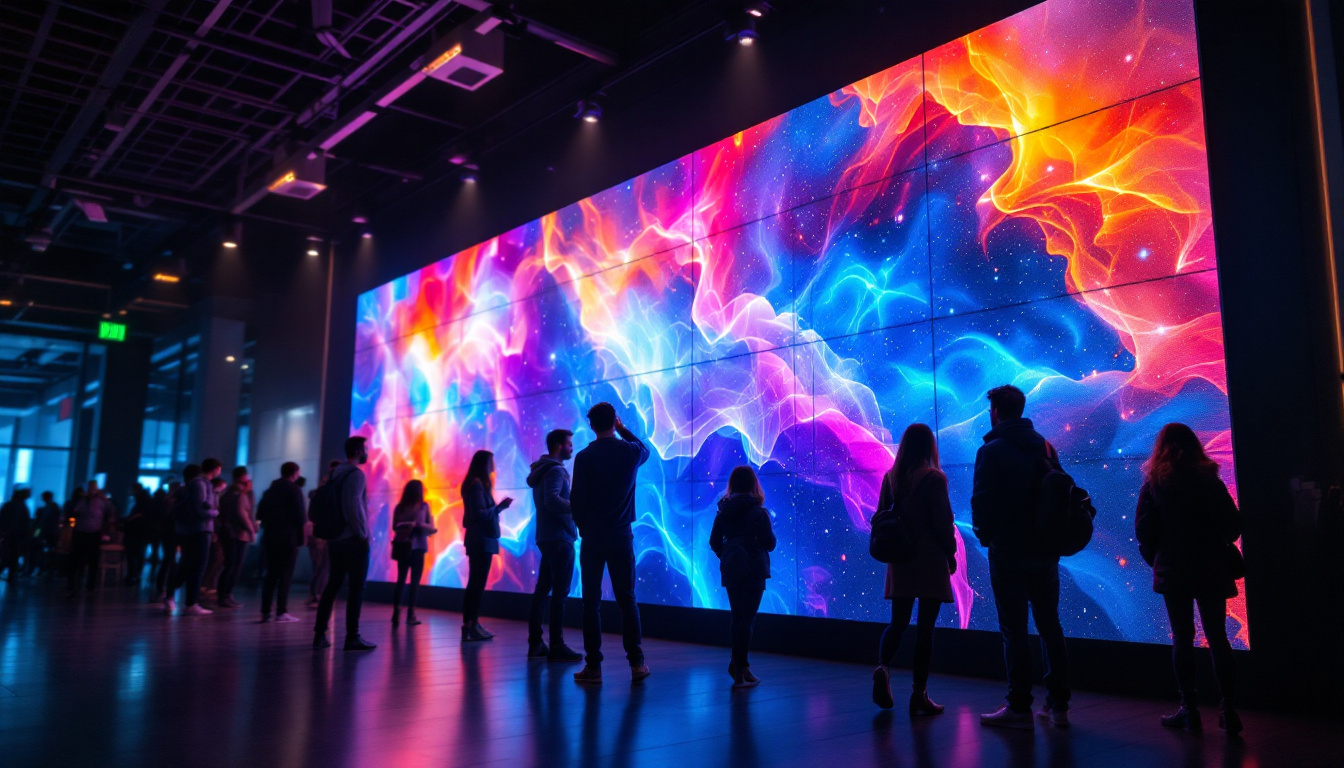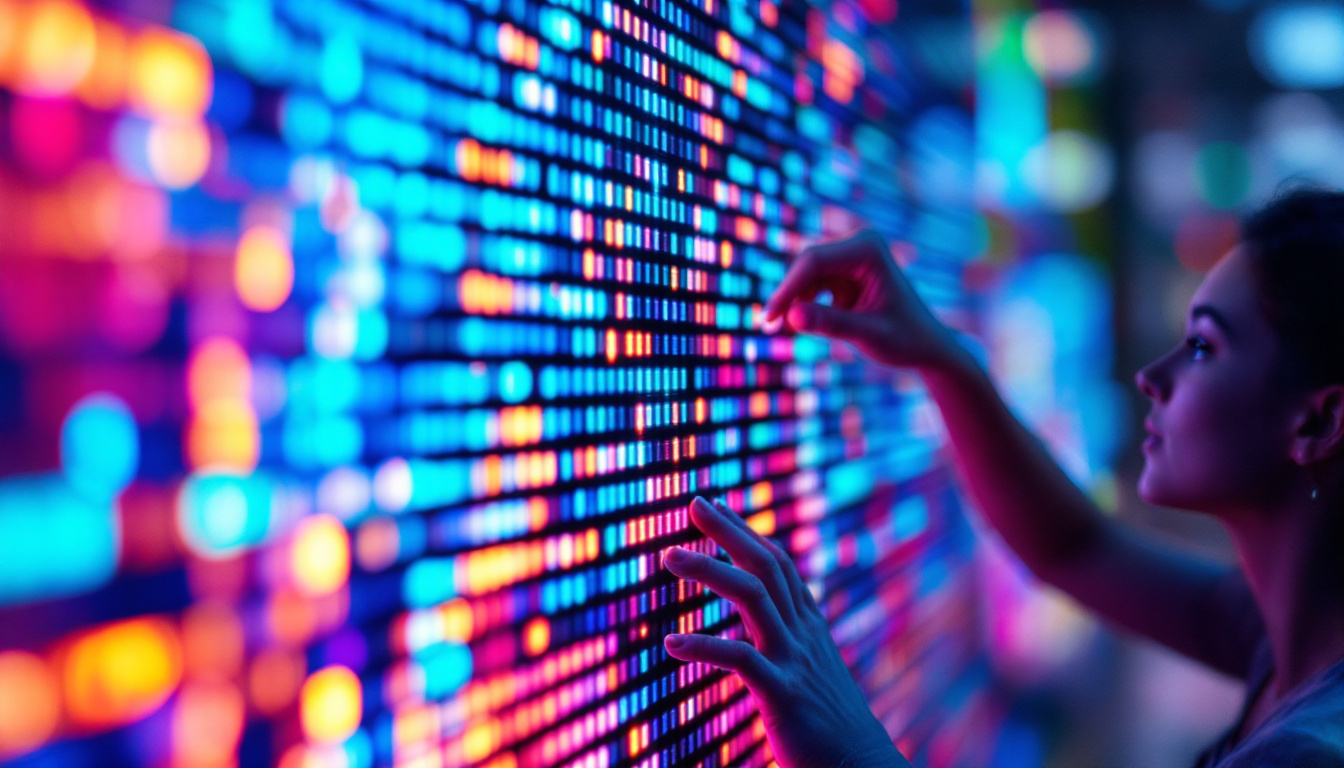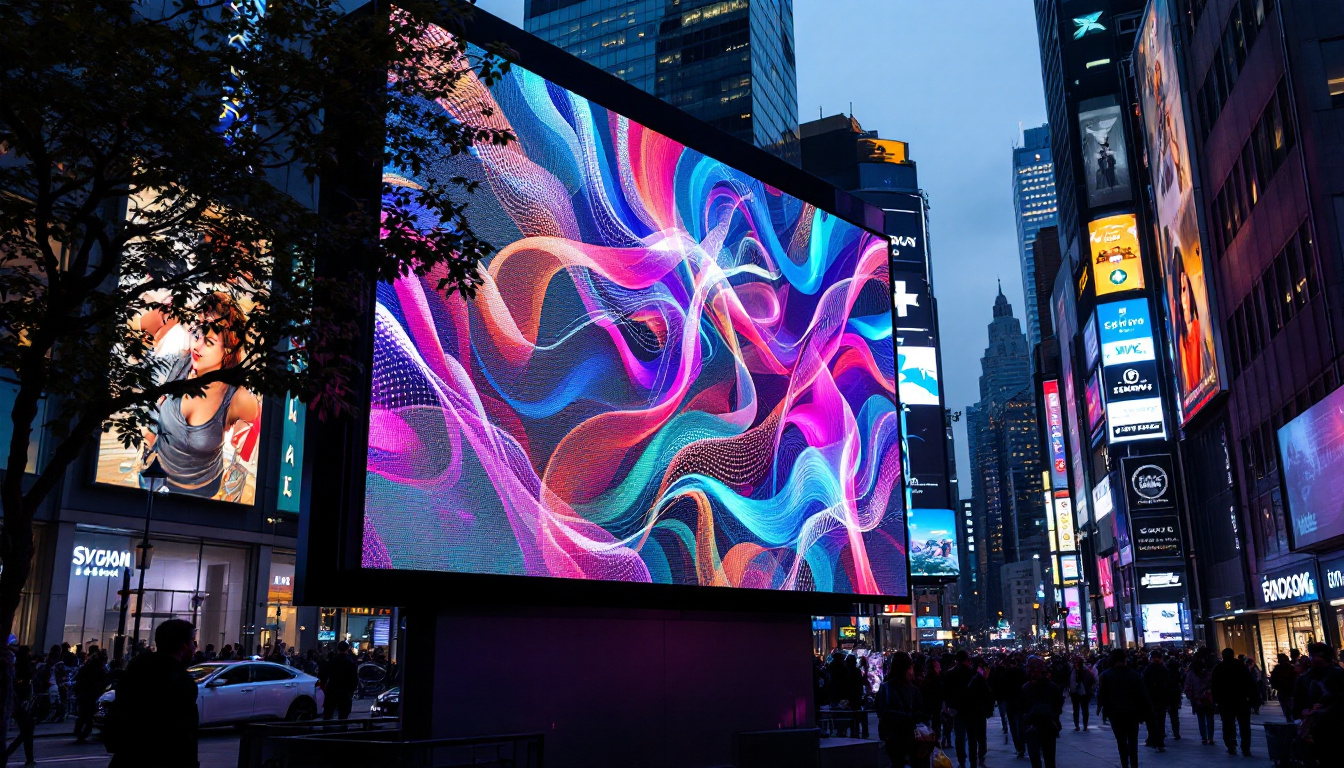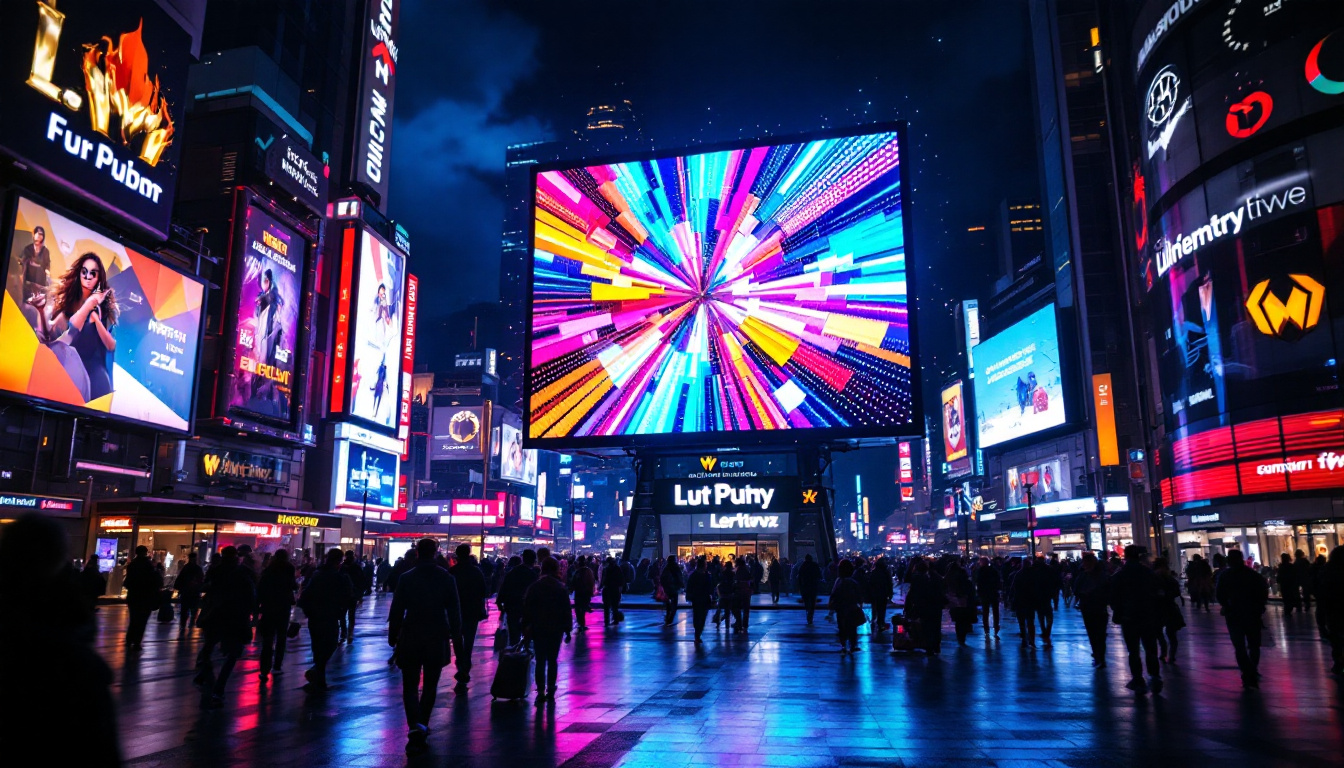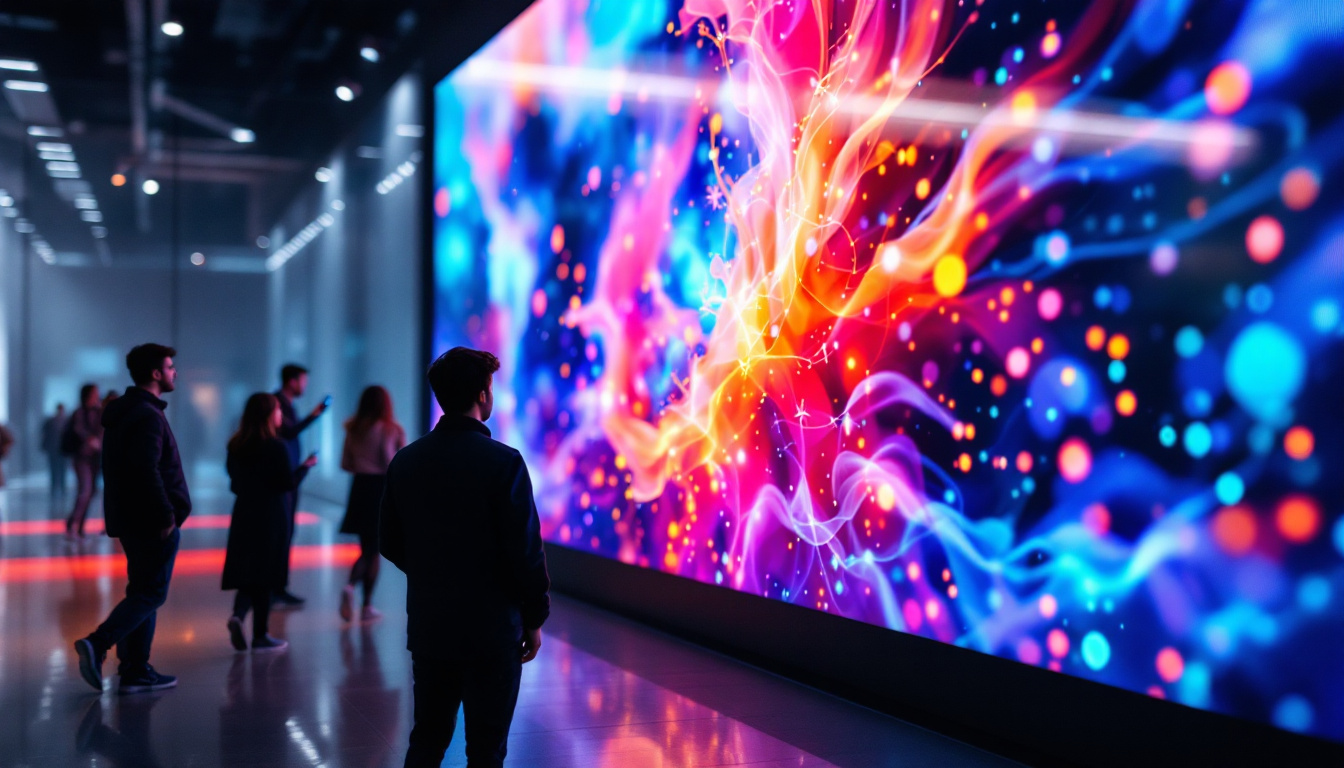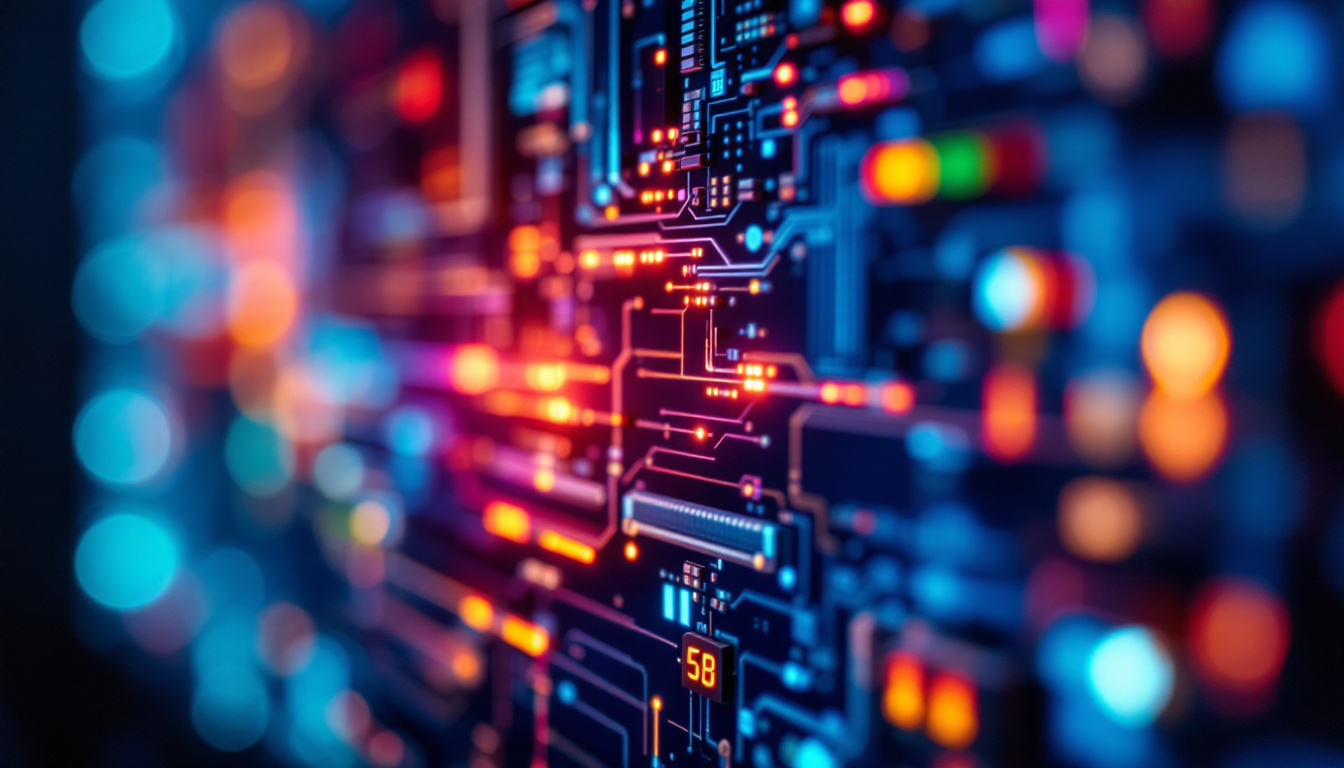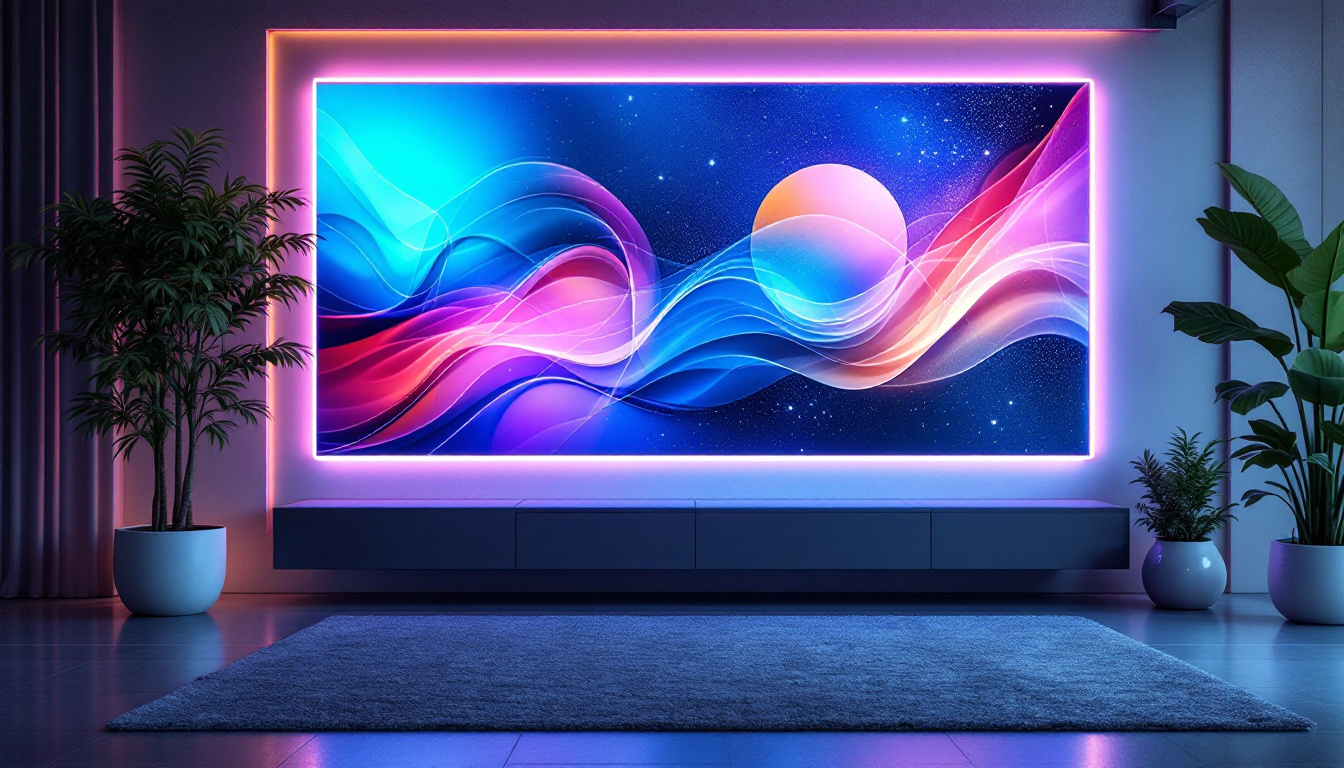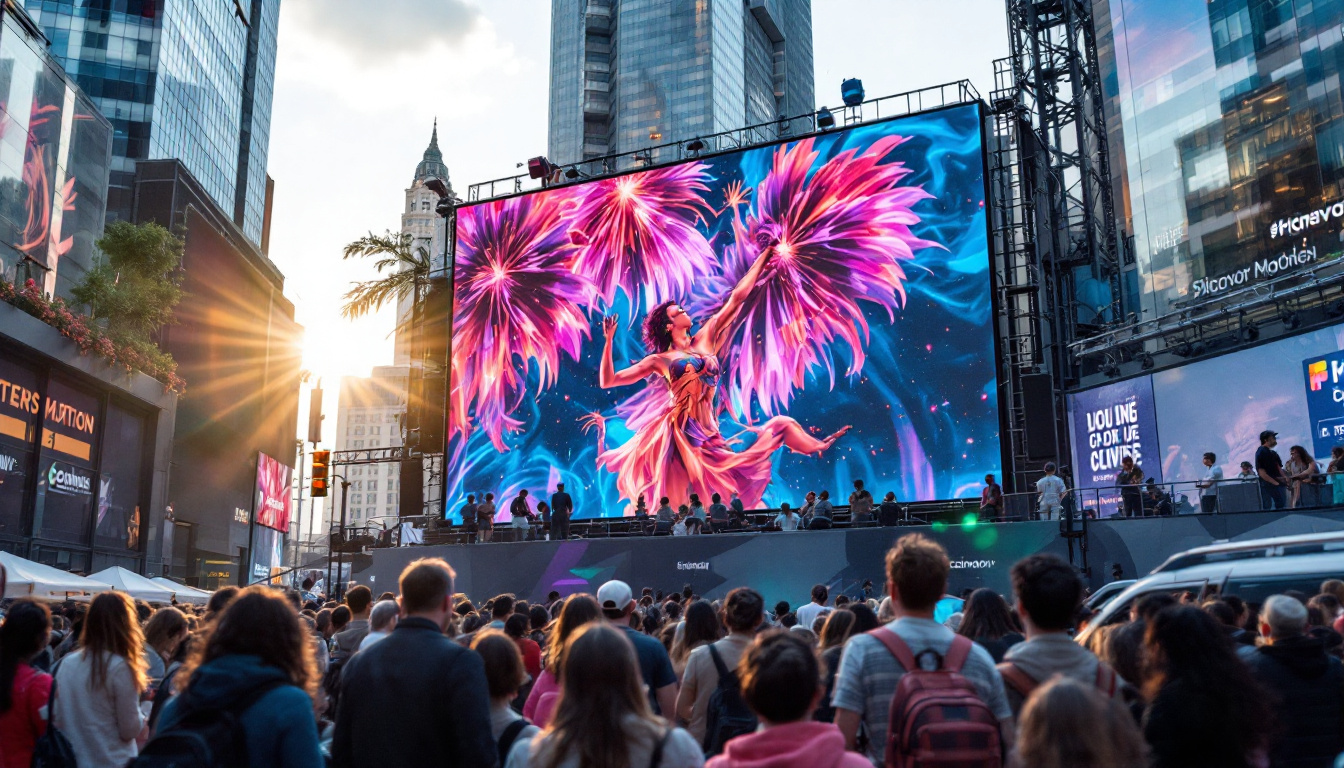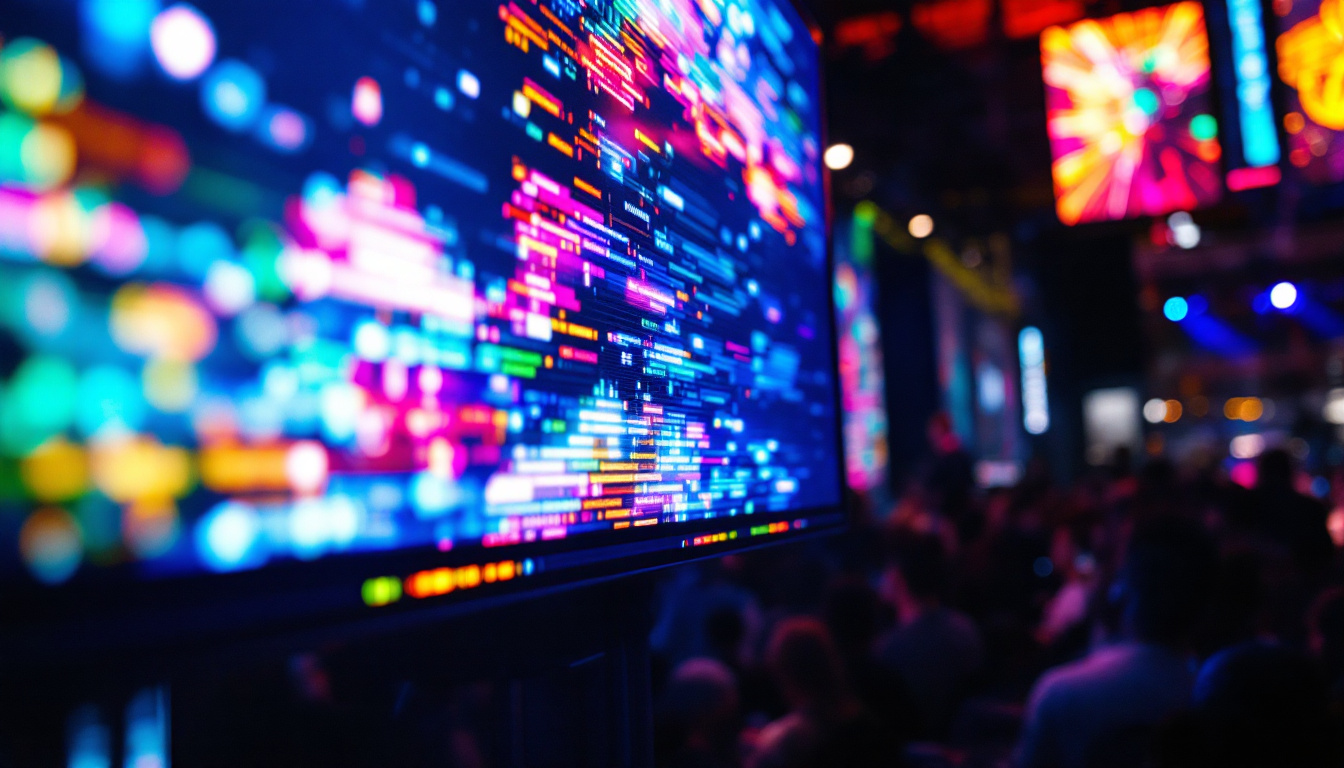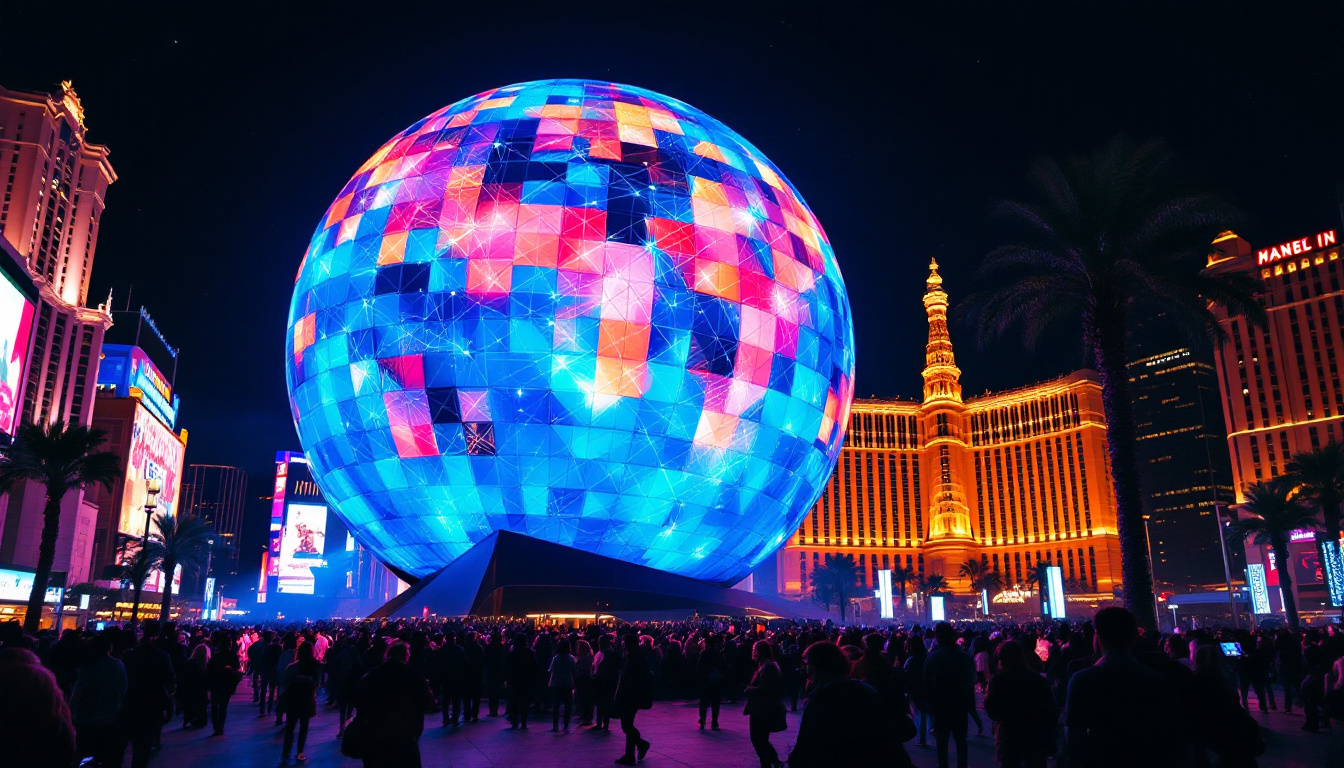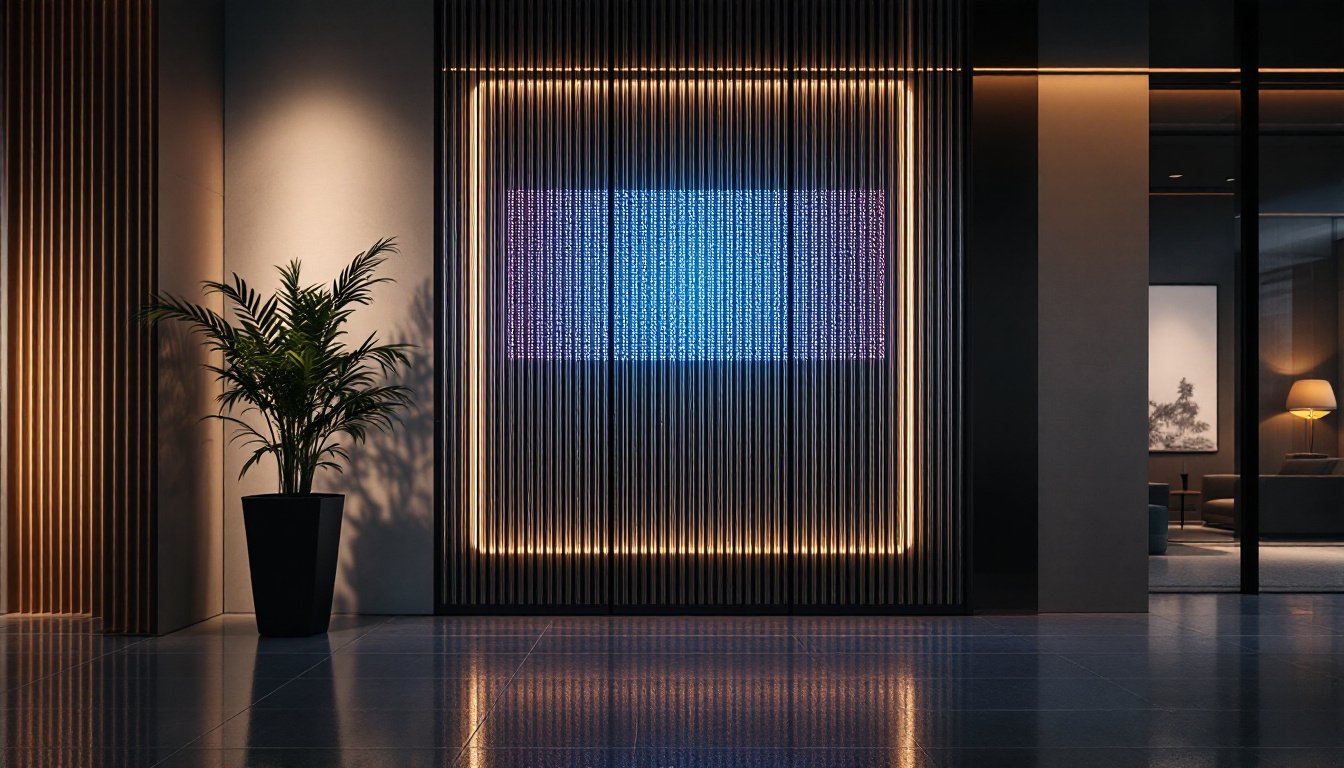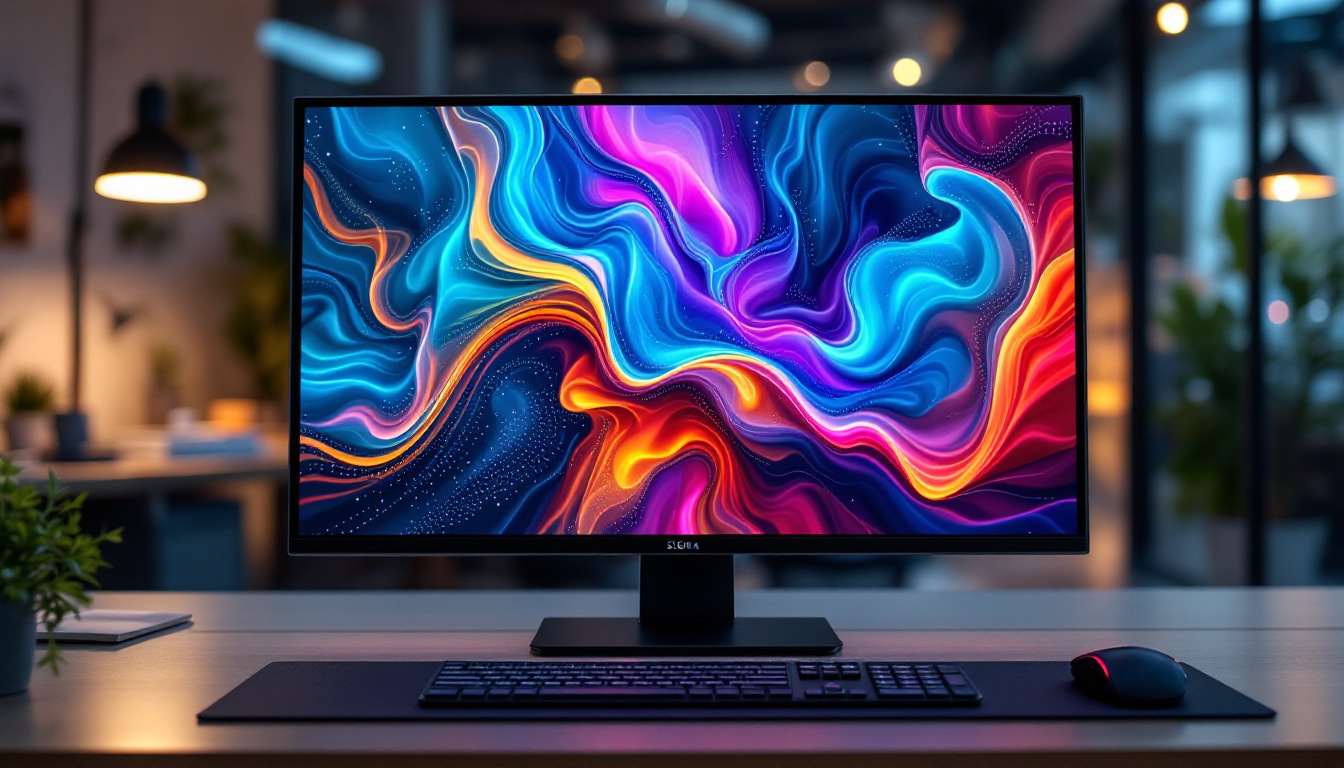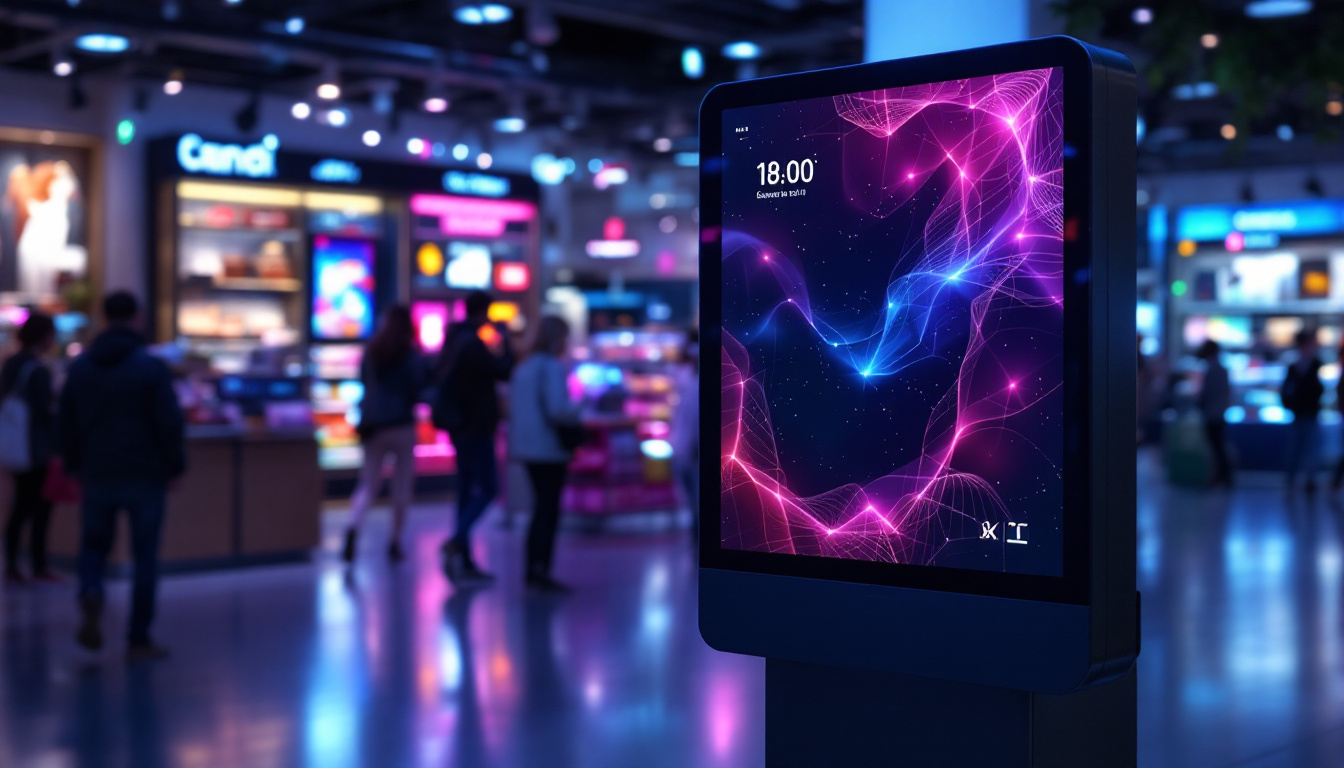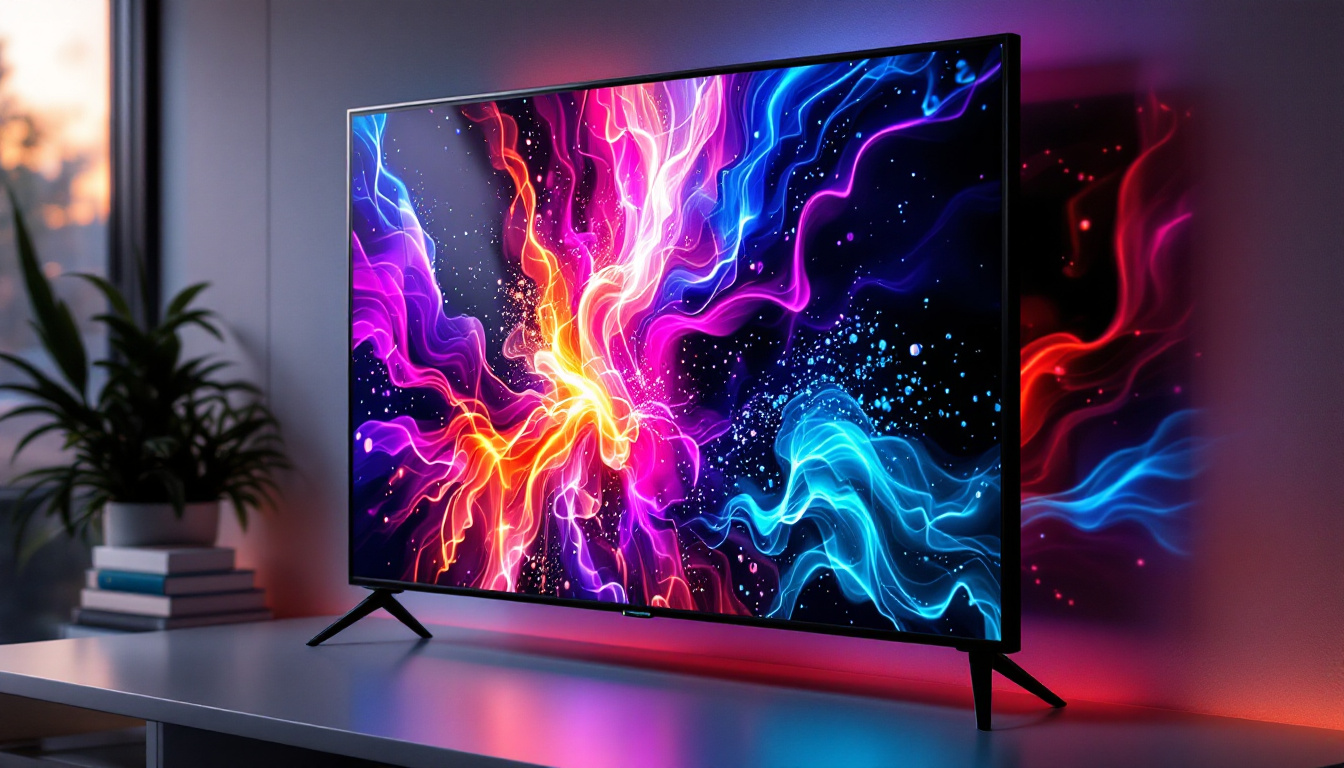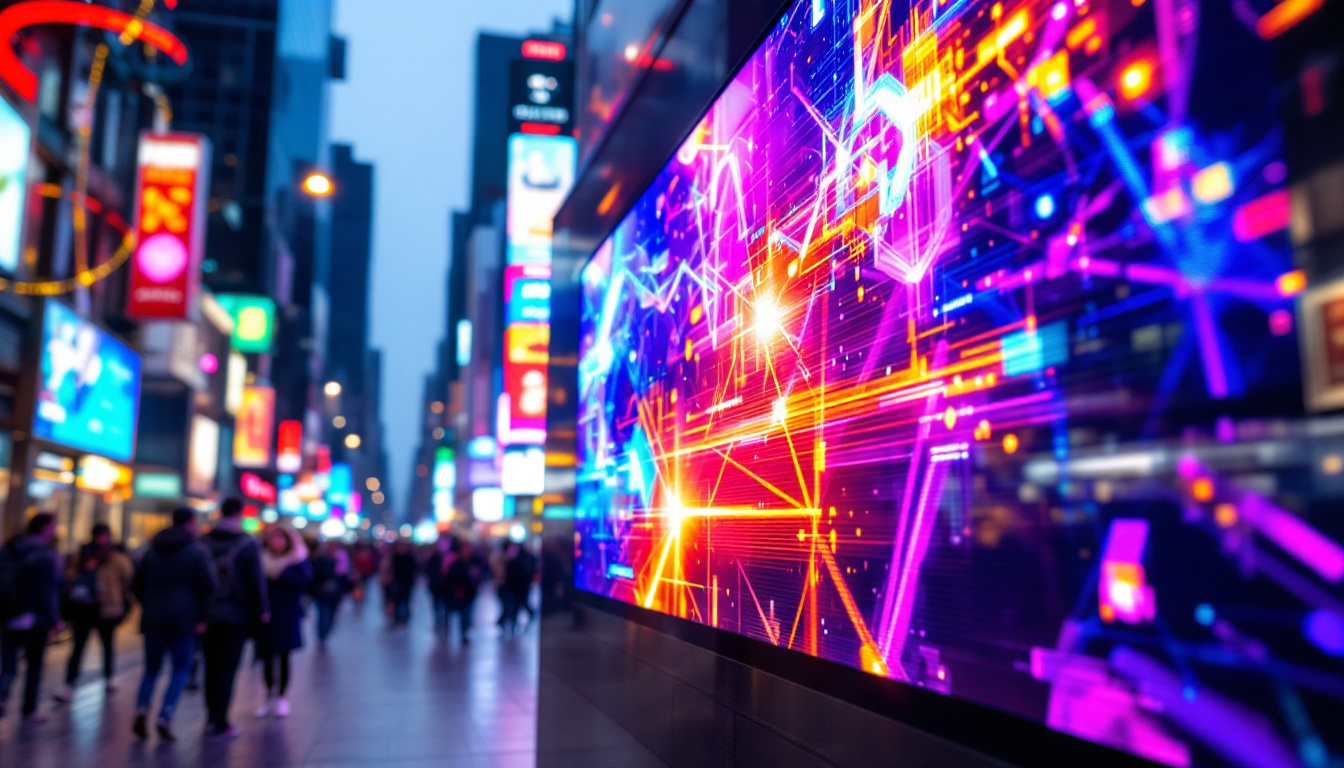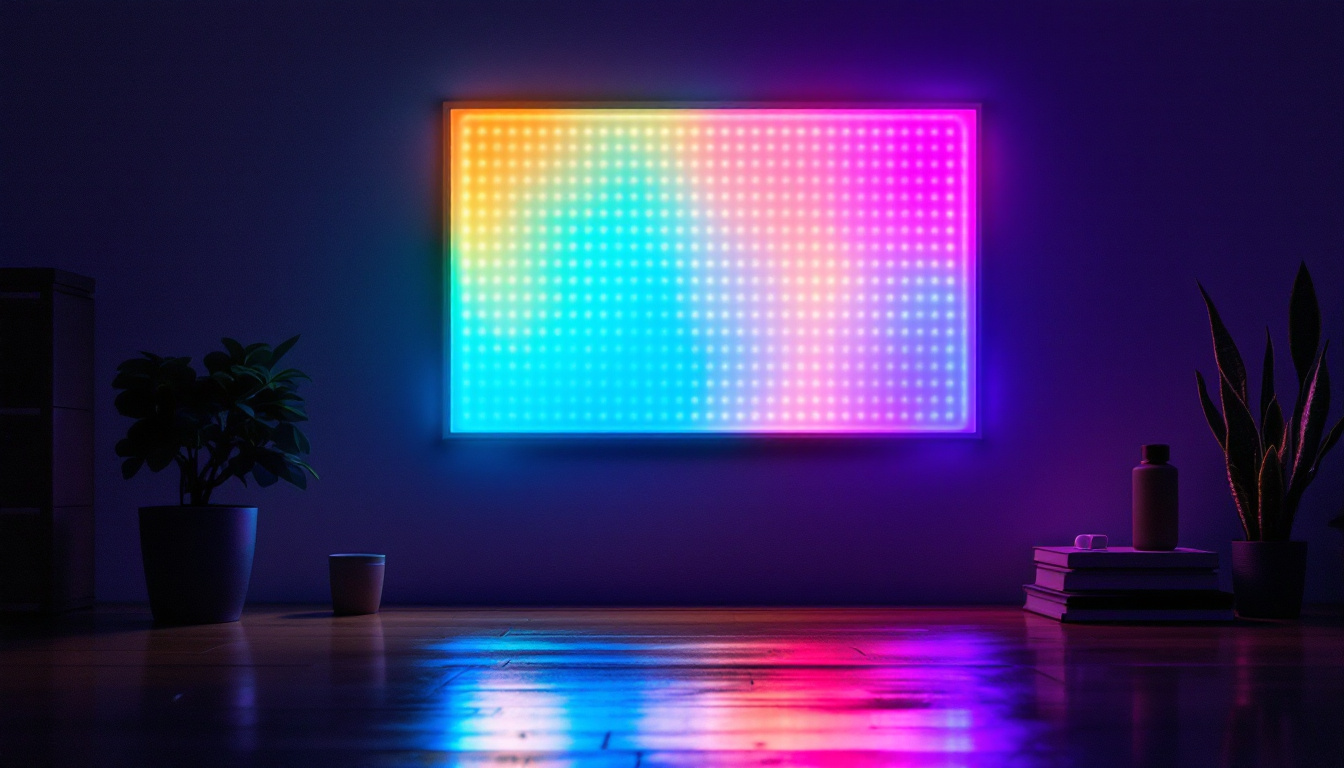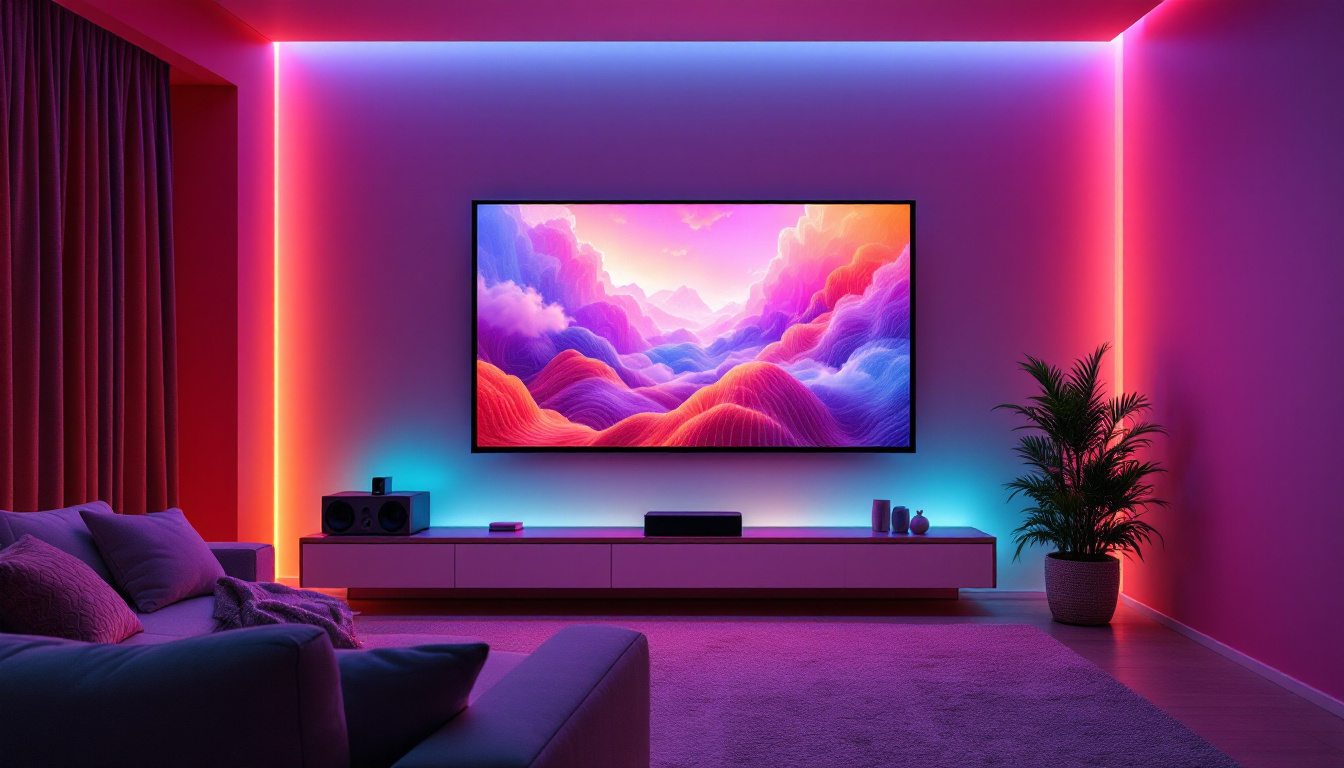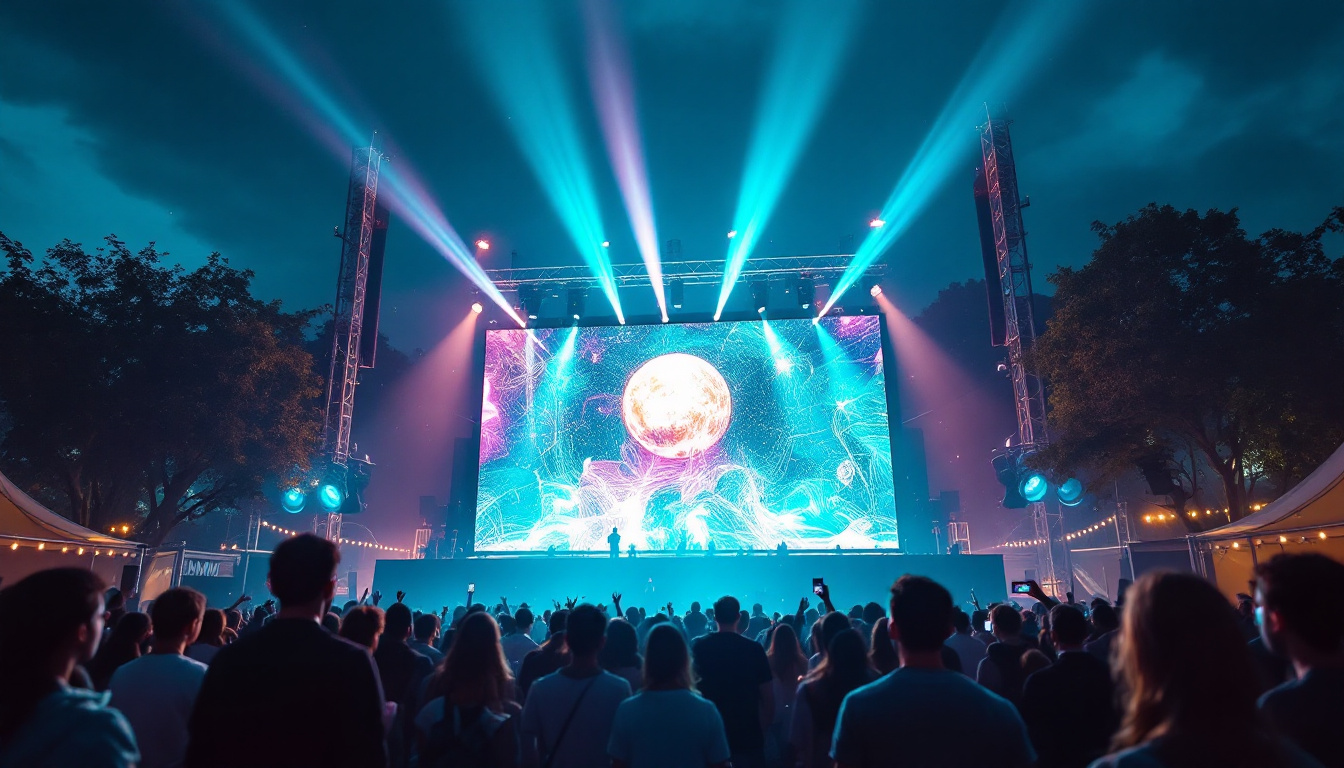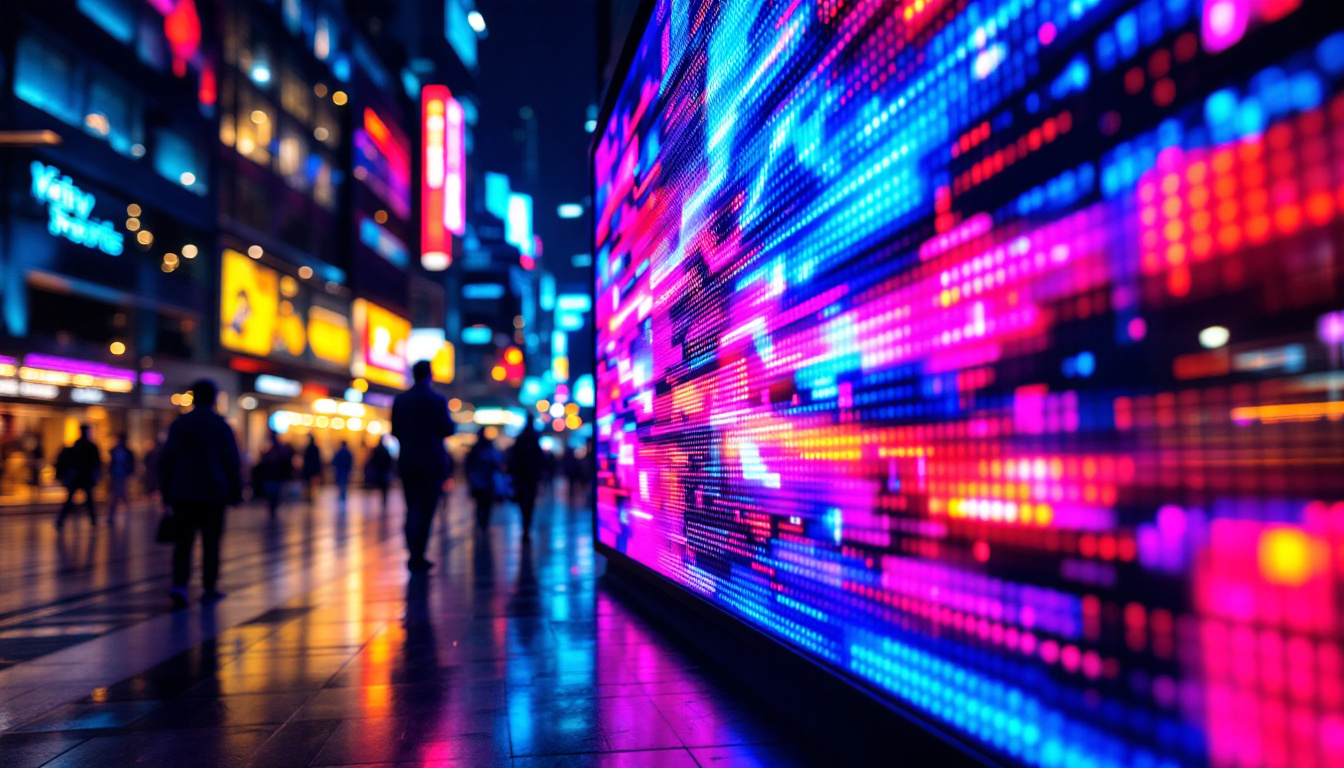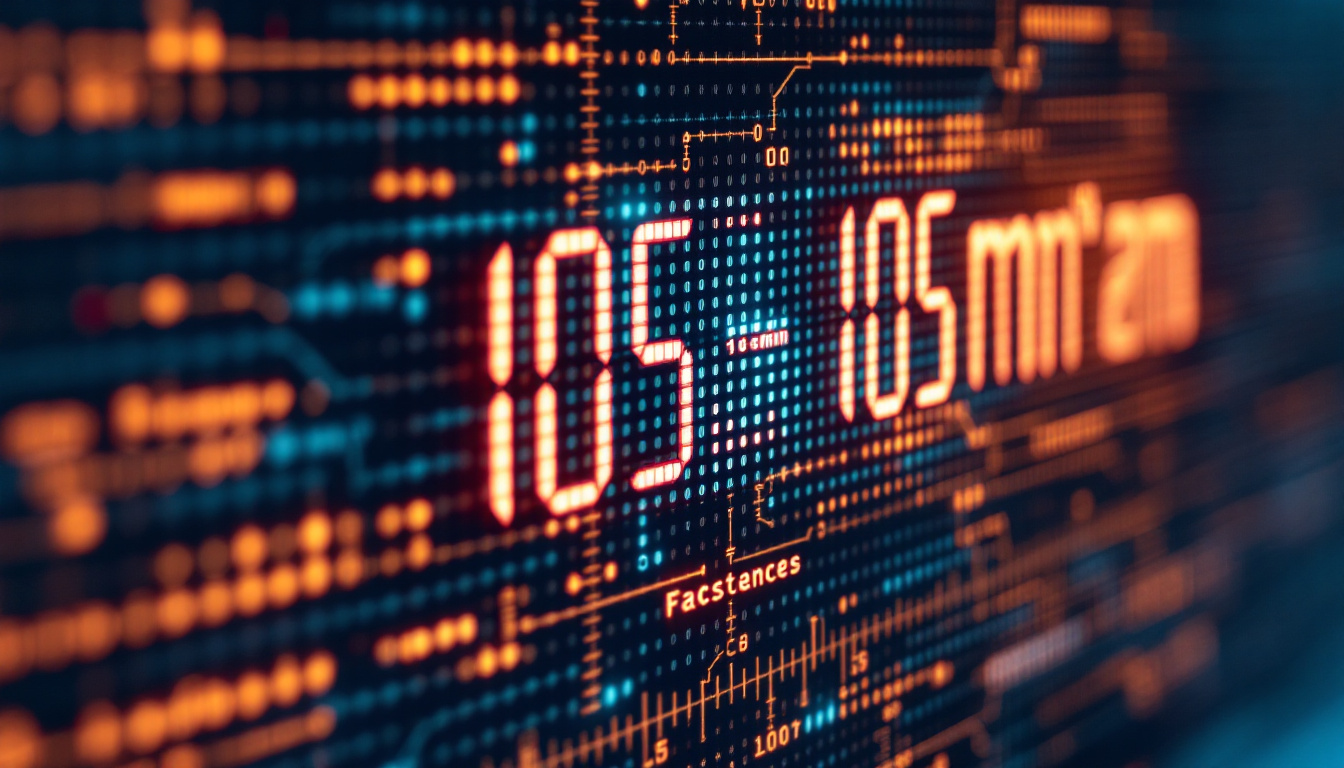In the realm of modern visual technology, LED panel walls have emerged as a transformative medium for communication, advertising, and entertainment. These displays offer vibrant colors, high brightness, and exceptional clarity, making them ideal for various applications. This article delves into the intricacies of LED panel walls, exploring their functionality, benefits, and the technology behind them.
Understanding LED Panel Walls
LED panel walls are composed of multiple LED panels that work together to create a large, cohesive display. They can be configured in various shapes and sizes, making them versatile for different environments, from concert stages to corporate offices. At their core, these walls utilize light-emitting diodes (LEDs) to produce images and videos with remarkable detail and brightness.
How LED Technology Works
LEDs are semiconductor devices that emit light when an electric current passes through them. In an LED panel wall, thousands of these tiny diodes are arranged in a grid format. Each diode can emit a specific color, and by combining different colors, the panels can display a wide spectrum of hues. The most common configuration involves red, green, and blue (RGB) diodes, which together can create millions of color variations.
The brightness and clarity of the display are influenced by the pixel pitch, which refers to the distance between the centers of two adjacent pixels. A smaller pixel pitch results in a higher resolution, allowing for more detailed images. This is particularly important for applications where viewers are close to the screen, such as in retail environments or during live events. Additionally, advancements in LED technology have led to improved energy efficiency, allowing these displays to operate at lower power levels while maintaining high brightness and color accuracy, which is a significant advantage for long-term installations.
Types of LED Panel Walls
LED panel walls can be categorized into several types based on their construction and intended use. The most common types include:
- Indoor LED Panels: Designed for environments with controlled lighting, these panels provide high resolution and vibrant colors, making them suitable for corporate presentations, retail displays, and exhibitions.
- Outdoor LED Panels: Built to withstand the elements, outdoor panels are typically brighter and more durable, featuring weather-resistant casings. They are often used for billboards, sports arenas, and outdoor events.
- Transparent LED Panels: These panels allow for visibility through the display, making them ideal for shopping malls and storefronts where maintaining a view of the interior is essential.
In addition to these common types, there are also specialized LED panel walls designed for specific applications. For instance, curved LED panels can create immersive environments by wrapping around structures or forming unique shapes that enhance visual storytelling. Furthermore, modular LED panels offer flexibility in design, enabling users to easily reconfigure the display layout to suit different events or branding needs. The integration of smart technology has also begun to transform LED panel walls, allowing for interactive displays that respond to viewer engagement, thus creating a dynamic experience that captivates audiences.
Applications of LED Panel Walls
The versatility of LED panel walls has led to their adoption across various sectors. From advertising to entertainment, their applications are vast and growing.
Advertising and Marketing
One of the most significant uses of LED panel walls is in advertising. Businesses leverage these displays to capture the attention of potential customers with dynamic content that can be changed easily. The high brightness and vivid colors ensure that advertisements stand out, even in bright daylight.
Digital billboards, for instance, utilize LED technology to deliver engaging advertisements that can be updated in real-time. This flexibility allows companies to promote different products or services throughout the day, maximizing their reach and effectiveness. Furthermore, the integration of data analytics with LED displays enables businesses to tailor their advertising strategies based on audience demographics and behaviors, ensuring that the right message reaches the right people at the right time.
Entertainment and Events
In the entertainment industry, LED panel walls have revolutionized how audiences experience live performances. Concerts, theater productions, and sporting events often feature large LED displays that enhance the visual experience. These panels can display captivating visuals, live feeds, and interactive content, creating an immersive atmosphere for attendees.
Moreover, the ability to create custom shapes and sizes means that LED walls can fit any stage design, allowing for creative and innovative setups that enhance the overall production value. For instance, during major music festivals, artists can incorporate LED walls into their performances, synchronizing visuals with music to create a multi-sensory experience. This not only captivates the audience but also elevates the artistic expression of the performers, making each event unique and memorable.
Corporate and Educational Use
In corporate settings, LED panel walls are increasingly used for presentations, conferences, and training sessions. Their high resolution ensures that even the smallest details are visible, making them ideal for displaying complex data and graphics. Additionally, the ability to connect multiple panels allows for large-scale presentations that can engage a larger audience.
Educational institutions also benefit from LED panel walls, using them for lectures, events, and interactive learning experiences. The dynamic nature of these displays can enhance student engagement and facilitate more effective communication of information. For example, during science fairs or technology expos, schools can utilize LED panels to showcase student projects, allowing for a more interactive and visually appealing presentation. This not only encourages creativity among students but also fosters a collaborative learning environment where ideas can be shared and explored in real-time.
Benefits of LED Panel Walls
LED panel walls offer numerous advantages that make them an attractive option for various applications. Understanding these benefits can help organizations make informed decisions about their visual display needs.
High Quality and Clarity
One of the primary benefits of LED panel walls is their superior image quality. The combination of high brightness, contrast ratios, and vibrant colors ensures that content is displayed with clarity and precision. This quality is particularly important in environments where visual impact is crucial, such as advertising and entertainment.
Energy Efficiency
LED technology is known for its energy efficiency compared to traditional display technologies. LED panel walls consume significantly less power, leading to lower operational costs. This efficiency not only benefits the environment but also reduces the overall expenses associated with running large displays.
Durability and Longevity
LED panel walls are built to last, with many models rated for over 100,000 hours of use. This longevity reduces the need for frequent replacements, making them a cost-effective investment in the long run. Additionally, their robust construction means they can withstand harsh conditions, particularly outdoor panels that are designed to resist weather-related damage.
Installation and Maintenance
While LED panel walls offer numerous benefits, proper installation and maintenance are essential to ensure optimal performance. Understanding these processes is crucial for organizations considering this technology.
Installation Considerations
Installing an LED panel wall requires careful planning and consideration. Factors such as location, viewing distance, and intended use must be taken into account. Professional installation is often recommended to ensure that the panels are securely mounted and configured correctly for optimal performance.
Additionally, the layout of the panels should be designed to minimize gaps and ensure a seamless display. This is particularly important for larger installations where visual continuity is essential.
Maintenance Requirements
While LED panel walls are generally low-maintenance, regular upkeep is necessary to ensure their longevity and performance. This includes cleaning the panels to remove dust and debris, which can affect image quality. It is also important to monitor the performance of individual LEDs and replace any that may fail over time.
Many manufacturers offer maintenance contracts that include regular inspections and servicing, providing peace of mind for organizations that rely on these displays for critical applications.
Future Trends in LED Panel Technology
The LED panel industry is continually evolving, with advancements in technology driving new trends and innovations. Understanding these trends can provide insights into the future of visual displays.
Increased Resolution and Pixel Density
As technology advances, the demand for higher resolution displays continues to grow. Future LED panel walls are expected to feature increased pixel density, allowing for even more detailed images. This trend will enhance the viewing experience, particularly in applications where close viewing is common.
Integration with Smart Technologies
Another emerging trend is the integration of LED panel walls with smart technologies. This includes features such as touch interactivity, real-time data integration, and connectivity with mobile devices. As these technologies become more prevalent, LED panel walls will evolve into more interactive and engaging displays.
Sustainability Initiatives
With growing awareness of environmental issues, the LED industry is focusing on sustainability. Future developments may include more eco-friendly materials, improved energy efficiency, and recycling programs for old panels. These initiatives will not only benefit the environment but also appeal to consumers who prioritize sustainability in their purchasing decisions.
Conclusion
LED panel walls represent a significant advancement in display technology, offering unparalleled quality, versatility, and efficiency. As they continue to evolve, these displays will play an increasingly important role in various sectors, from advertising to education. Understanding their functionality, benefits, and future trends can help organizations harness the power of LED technology to enhance their communication and engagement strategies.
With their ability to deliver stunning visuals and dynamic content, LED panel walls are poised to remain at the forefront of visual communication for years to come. Investing in this technology is not just about keeping up with trends; it is about embracing a future where visual impact is paramount.
Discover LumenMatrix LED Display Solutions
Ready to elevate your visual communication with the latest in LED technology? Explore LumenMatrix’s comprehensive range of LED display solutions, from vibrant Indoor and Outdoor LED Wall Displays to innovative Custom and All-in-One LED Displays. Whether you’re looking to captivate your audience, enhance brand visibility, or create unforgettable visual experiences, LumenMatrix is here to transform your ideas into reality. Check out LumenMatrix LED Display Solutions today and join the revolution in digital signage and visual storytelling.

